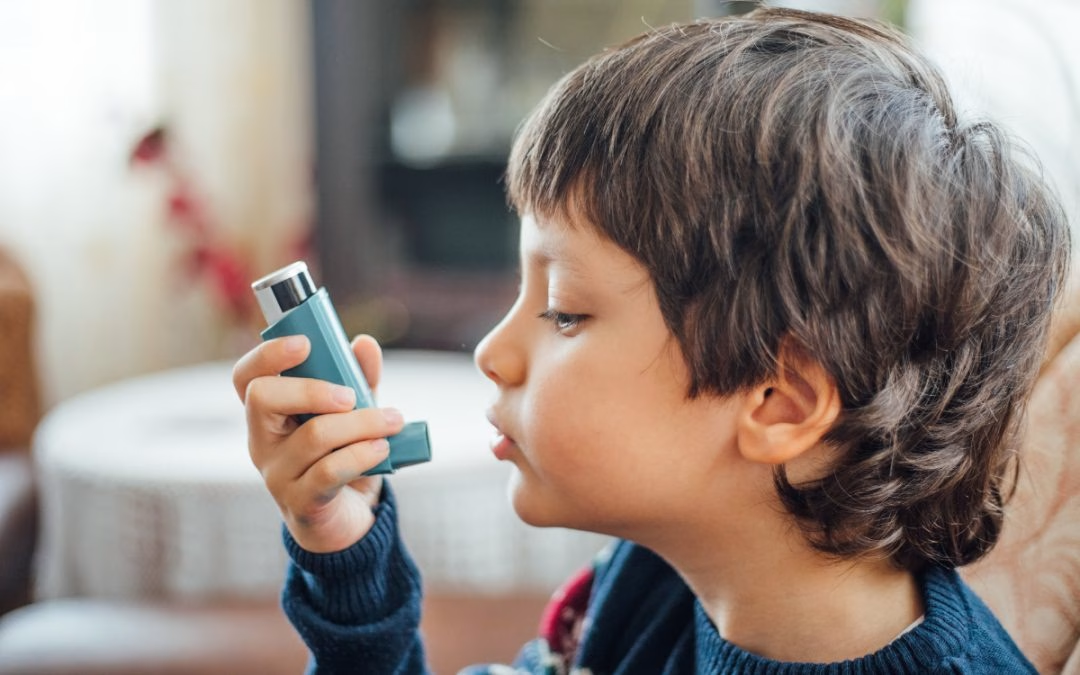
Asthma is one of the most common chronic conditions affecting children in and around Lenoir. Characterized by inflammation and narrowing of the airways, asthma can lead to recurring episodes of wheezing, shortness of breath, and coughing. While asthma can be a serious and life-altering condition, it is also manageable with proper treatment and lifestyle adjustments. This blog aims to shed light on the signs of asthma in children, potential triggers, and the steps you can take to seek help if you suspect your child may be living with this condition.
Recognizing the Signs of Asthma
Asthma symptoms in children can vary widely, ranging from mild to severe. Understanding these symptoms is crucial for early diagnosis and effective management. Below are the most common signs to watch out for:
⦁ Wheezing: Wheezing is often the first sign that parents notice in children with asthma. It’s a high-pitched, whistling sound that occurs when a child breathes, particularly during exhalation. Wheezing is typically more pronounced at night or after physical activities. While wheezing is commonly associated with asthma, it can also occur in other respiratory conditions, so it’s essential to get an accurate diagnosis.
⦁ Persistent Coughing: A persistent cough that seems to linger, especially one that worsens at night, is a common symptom of asthma. Unlike the occasional cough caused by a cold, an asthma-related cough tends to be dry and persistent, often triggered by exposure to allergens, cold air, or exercise.
⦁ Shortness of Breath: Children with asthma often experience shortness of breath, even with light physical activity. This symptom may become more noticeable during playtime or sports. In severe cases, shortness of breath may even occur while at rest. Children may describe this sensation as “tightness” or “heaviness” in their chest.
⦁ Chest Tightness: The sensation of chest tightness or pressure is another hallmark sign of asthma. Children may describe feeling as though there is something pressing down on their chest, making it hard to take deep breaths. This feeling often accompanies other symptoms, such as wheezing or shortness of breath.
Differentiating Asthma from Other Conditions
It’s important to note that many of the symptoms associated with asthma—such as coughing and wheezing—can also be caused by other respiratory conditions like bronchitis, allergies, or colds. If your child is experiencing these symptoms, a thorough medical evaluation is essential to rule out other causes and confirm whether asthma is present.
Common Triggers of Asthma Symptoms
Once asthma is diagnosed, identifying and managing triggers is a key component of controlling the condition. Asthma triggers are environmental or lifestyle factors that can worsen symptoms or lead to an asthma attack. Some common triggers include:
⦁ Allergens: Common allergens such as dust mites, pet dander, pollen, mold, and cockroaches can exacerbate asthma symptoms. For children sensitive to these triggers, exposure can lead to sudden and severe asthma attacks.
⦁ Irritants: Environmental irritants like cigarette smoke, air pollution, strong odors (like perfumes or cleaning products), and even cold air can trigger asthma symptoms.
⦁ Infections: Viral infections like colds, the flu, and sinus infections are common triggers, especially in young children. These infections can inflame the airways and make it harder for a child to breathe, leading to increased asthma symptoms.
⦁ Physical Activity: While exercise is important for overall health, strenuous physical activities can sometimes trigger asthma symptoms in children, especially if the condition is not well-controlled.
⦁ Emotions: Stress, anxiety, and strong emotions can also trigger asthma symptoms. Intense emotional reactions can cause rapid breathing, which can, in turn, lead to shortness of breath or wheezing in children with asthma.
How Asthma is Diagnosed
If you suspect your child may have asthma, it’s crucial to see a doctor for a comprehensive evaluation. Diagnosing asthma in children can be complex, as there is no single test that can definitively diagnose the condition. Instead, doctors rely on a combination of medical history, physical exams, and diagnostic tests to make a diagnosis.
Common diagnostic methods include:
⦁ Lung Function Tests: Lung function tests, such as spirometry, are used to measure how well your child’s lungs are working. These tests can help determine how much air your child can exhale and how quickly, providing important insights into airway function.
⦁ Allergy Testing: Allergies are closely linked with asthma, so doctors may recommend allergy tests to identify any allergens that could be triggering symptoms. Skin prick tests or blood tests can determine if your child is allergic to common triggers like pollen, pet dander, or dust mites.
⦁ Chest X-Ray: In some cases, a chest X-ray may be used to rule out other conditions that could be causing your child’s symptoms, such as a respiratory infection or structural abnormalities in the lungs.
Managing Asthma Symptoms
Once diagnosed, asthma can be effectively managed with the right treatment plan. The goal of asthma treatment is to control symptoms, reduce the frequency of attacks, and allow children to live active, healthy lives. A comprehensive asthma management plan may include:
⦁ Medications: Asthma medications are typically divided into two categories—long-term control medications and quick-relief (rescue) medications. Long-term control medications, such as inhaled corticosteroids, help reduce airway inflammation, while quick-relief medications, such as bronchodilators, provide fast relief during an asthma attack.
⦁ Avoiding Triggers: Identifying and minimizing exposure to asthma triggers is essential. This might involve making changes at home, such as using air purifiers, removing carpets, or reducing exposure to pets.
⦁ Asthma Education: Education plays a critical role in managing asthma. Understanding how to recognize early signs of an asthma attack, how to use inhalers correctly, and when to seek medical help can significantly improve the quality of life for children with asthma.
When to Seek Medical Help
If your child is experiencing symptoms like persistent coughing, wheezing, or shortness of breath, it’s essential to consult a healthcare provider. Early diagnosis and treatment can prevent asthma from worsening and reduce the risk of severe attacks. Additionally, if your child’s asthma symptoms are not well-controlled despite treatment, or if they are experiencing more frequent attacks, schedule a follow-up appointment for a reassessment of their treatment plan.
Asthma is a common but manageable condition that affects millions of children. Recognizing asthma signs early on is key to getting your child the necessary care. From identifying symptoms and triggers to working with your healthcare provider on a personalized treatment plan, there are many steps you can take to ensure your child leads a healthy, active life despite their condition. If you suspect your child may have asthma, don’t hesitate to reach out to a medical professional for guidance and support.


